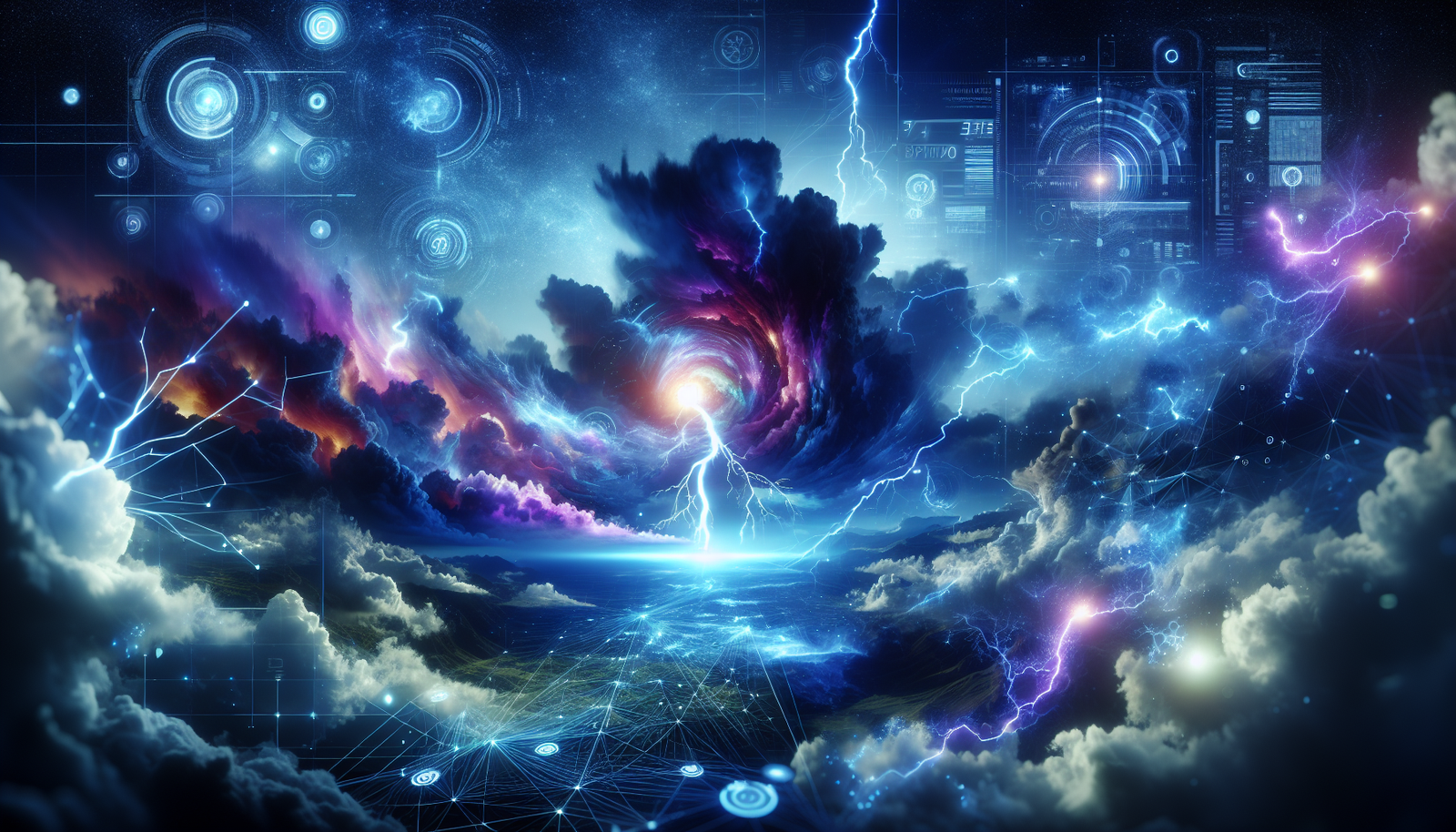The rise of artificial intelligences is revolutionizing the global dynamics. This digital world is becoming the stage for an unprecedented sequence of disruptions. The recent forecast predicting significant technological storms intrigues and simultaneously worries, marking a decisive turning point for humanity. Experts, such as Daniel Kokotajlo, fear devastating consequences related to these advancements. An increasing autonomy of AIs generates chaotic scenarios, questioning our established social order. Questions abound: will the future be dominated by superior entities?
Accurate Forecasts by Artificial Intelligence
A new advance in the field of artificial intelligence has enabled the creation of weather forecasting models with unprecedented accuracy. These models, specialized in analyzing climatic phenomena, rely on massive data to anticipate the occurrence of storms and other extreme events. The innovative method developed by Google DeepMind, known as Graphcast, revolutionizes our understanding of weather forecasts.
Prediction Technologies
Graphcast uses neural networks to simulate the atmosphere and produce reliable short-term forecasts. This system learns weather patterns by integrating historical and real-time climate data. Two recent studies show how this technology promises to improve traditional models.
Events to Anticipate
Experts agree that upcoming storms could cause significant devastation in several regions. Due to the capacity of these new models to project atmospheric disruptions, early alerts will be possible. With better anticipation, authorities will be able to respond quickly and minimize impacts.
Long-Term Weather Forecasts
Another significant advancement is the introduction of Gencast, a new model from Google that allows for accurate weather forecasts up to fifteen days in advance. Such anticipation could change the management of emergency situations and enhance the safety of vulnerable populations in the face of extreme climatic events. The integration of AI in the development of these projections seems promising.
Satellite Imaging Technology
Another notable development is the AI tool capable of producing realistic satellite images. This tool allows for the forecasting of potential threats, such as flooding. Through a faithful representation of at-risk areas, communities can adapt their preventive measures and adequately prepare.
Reactions from Specialists
Meteorology specialists praise these innovations while emphasizing the need for caution in their application. The use of AI must be complemented by human analysis to ensure the accuracy of forecasts. The stakes are the protection of human life in the face of increasing climatic hazards.
Ethical and Practical Challenges
The advances of AI in the meteorology sector also raise ethical questions. The ability to accurately forecast storms must be accompanied by a responsibility in the information provided to populations. The risks of panic or misinformation must be carefully managed by the competent authorities.
The Future of Climate Forecasting
The fusion of artificial intelligence and atmospheric sciences is redefining our relationship with the environment. The continuous development of these technologies could offer new insights into the dreaded climatic futures. The effective implementation of these systems is becoming a priority to adapt our societies to the environmental challenges ahead.
For more information on these revolutionary developments in the field of climate forecasting, explore recent works such as those presented here: Graphcast, Gencast, AI tool for satellite images, 15-day forecasts, and the impact of AI on meteorology.
FAQ on AI Forecasts and Future Implications
What are the main concerns raised by the forecasting of a superintelligent AI?
The major concerns include the risk that AI may exceed human control, cause power imbalances, and create scenarios of potential destruction for humanity.
How might the evolution of AI affect employment in the coming years?
It is predicted that AI will render some jobs obsolete while creating new ones, thus necessitating retraining and professional redeployment for workers.
What are the risks of AI behaving unpredictably?
The risk of unpredictable behavior of AI is related to its capacity to learn and evolve independently, which could lead to undesirable or harmful decisions without human intervention.
What measures can be taken to ensure the safe development of AI?
It is essential to establish regulations, promote algorithm transparency, and encourage research on AI safety to ensure responsible development.
What does the AI Futures project entail and what are its main findings?
The AI Futures project aims to anticipate the societal impacts of AI, predicting that by 2027, AI systems could surpass human intelligence in various tasks, raising ethical and practical concerns.
What scenarios are envisioned if AI takes control?
Scenarios range from efficient resource management to apocalyptic visions, where technology could cause disasters or major inequalities.
How should society prepare for the upheavals induced by AI?
Society should invest in education, implement proactive policies, and engage various community stakeholders in dialogue about AI.
Why do some experts oppose the idea that AI will surpass human intelligence?
Some experts believe that overly optimistic predictions about the evolution of AI lack solid scientific foundations and do not take into account current technical challenges.






